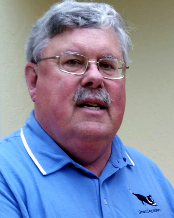
SMART DOG MININGTM
It
takes a smart dog to find hidden treasures
Sizing Equipment using Simulation

Like Goldilocks when sizing equipment we go through:
This equipment is too big.
This equipment is too small.
This equipment is just right!
A large part of any mining operation is the
material handling system and in particular the raw ore handling.
This would include the truck dump, primary crusher, conveyors
and raw ore stockpile as a minimum.
And yes they can get even more extensive.
In building a new operations or expanding an existing one,
the proper selection of the material handling system can make a big
difference in how well everything operates.
As with Goldilocks, getting it “just right”, is important.
Under-sizing surge bins, crushers, conveyors
and stockpiles can lead to delays and lost production.
Oversized systems are expensive, both in capital and later in
operating and maintenance costs.
Sizing these systems has in the past been done by using
engineering judgment and experience factors. The conventional
approach to sizing equipment for a material handling system has used
design material balance and rules of thumb to provide a system
capable of handling fluctuations.
Engineering judgment and experience are very
important, and many systems have been successfully sized this way.
But there is always that nagging doubt in the back of the
mind until actually material is run through, “is it sized properly?”
With the increased availability of simulation
modeling software, it is now possible to model a system and provide
a better understanding of the system capacity and bottlenecks.
Simulation programs allow you to model the system and find the
oversized and undersized areas before you build.
The manufacturing industry has been a major
user of simulation to reduce in process storage and surge capacity,
with the goal of increasing throughput without increasing facility
size. It has been used extensively to size assembly lines,
distribution systems, and similar.
This same work has direct application in mining particularly
in equipment sizing and system capability analysis.
Simulation systems can create relatively detailed models of
the material handling system.
For similar reasons this topic has been
looked at by several mining operations.
At the Pedro De Valdivia Mine it was to deter-mine the impact
on capacity of changes in truck and loader size. Other uses were to
evaluate the capacity and life of a mine under varying conditions
and to evaluate the impact of changing system details (size and
capacity) on the total mine life and throughput.
But this has not been an extensive use.
The production
rate for the system was 21.5 ktons per day.
The operation was to include a primary crusher, overland
conveyor, coarse ore stockpile and reclaim system that then fed a
two stage grinding flotation plant. I was only looking at the coarse
ore system (Figure 1).
Fig 1 Ore Handling

While there are many simulation packages out
there, for this I used a discrete event method based on event graphs
(for some more information see:
http://www.albrechts.com/mike/DES/default.html).
This type of simulation is a fairly easy to use task oriented
system that is suited for projects that have specific tasks or
events that occur such as truck dumping, feeding a crusher, feeding
a conveyor belt, or loading a stockpile.
The model for the system (Figure 2) is based
upon eight (8) events that are scheduled to oc-cur at various times.
Fig 2 Event Graph Model

Starting with the initial values in table below
the model was run three times, each for a simulated 30 day period.
The final results indicated that some sizes were larger then
needed.
|
Initial |
Final |
|||
|
Ore to process facilities |
|
|
||
|
dry
tons/day |
kt/d |
21.5 |
21.5 |
|
|
dry
tons/year |
Mt/y |
7.85 |
7.85 |
|
|
Haulage |
||||
|
end dump truck |
tonnes |
136 |
136 |
|
|
trucks/hr |
Maximum |
10 |
10 |
|
|
Average |
6.6 |
6.6 |
||
|
Minimum |
3.6 |
3.6 |
||
|
Primary crushing |
||||
|
Type of
crusher |
gyratory |
gyratory |
||
|
dump
pocket size |
tonnes (live) |
275 |
200 |
|
|
maximum
feed size |
mm |
1065 |
1065 |
|
|
product
size (p90) |
mm |
203 |
203 |
|
|
required
capacity |
t/hr |
1600 |
1050 |
|
|
storage
above belt |
tonnes (live) |
275 |
180 |
|
|
Crushed ore stockpile |
||||
|
conveyor
capacity |
t/hr |
1600 |
1200 |
|
|
stockpile capacity |
kt (live) |
28 |
28 |
|
|
kt (total) |
80 |
80 |
||
Required capacities of the dump hopper and
surge bin can be reduced from 275 tonnes to 175 tonnes each.
The crusher capacity can be reduced from 1600 tonnes/hr to
1050 tonne/hr.
The stockpile conveyor can be re-duced from 1600 tonne/hr to 1200
tonne/hr. Reducing the
size of the hoppers, and reducing the capacities of the crusher and
conveyor did not increase the truck wait time, or significantly
alter the amount of material in storage.
All of this without impacting the average throughput.

o
40+ years’ experience in the mining industry with strong mineral
processing experience in precious metals, copper, industrial
minerals, coal, and phosphate
o
Operational experience in precious metals, coal, and phosphate plus
in petrochemicals.
o
Extensive experience performing studies and determining feasibility
in the US and international (United States, Canada, Mexico, Ecuador,
Columbia, Venezuela, Chile, China, India, Indonesia, and Greece).
o
E-mail:
info@smartdogmining.com
